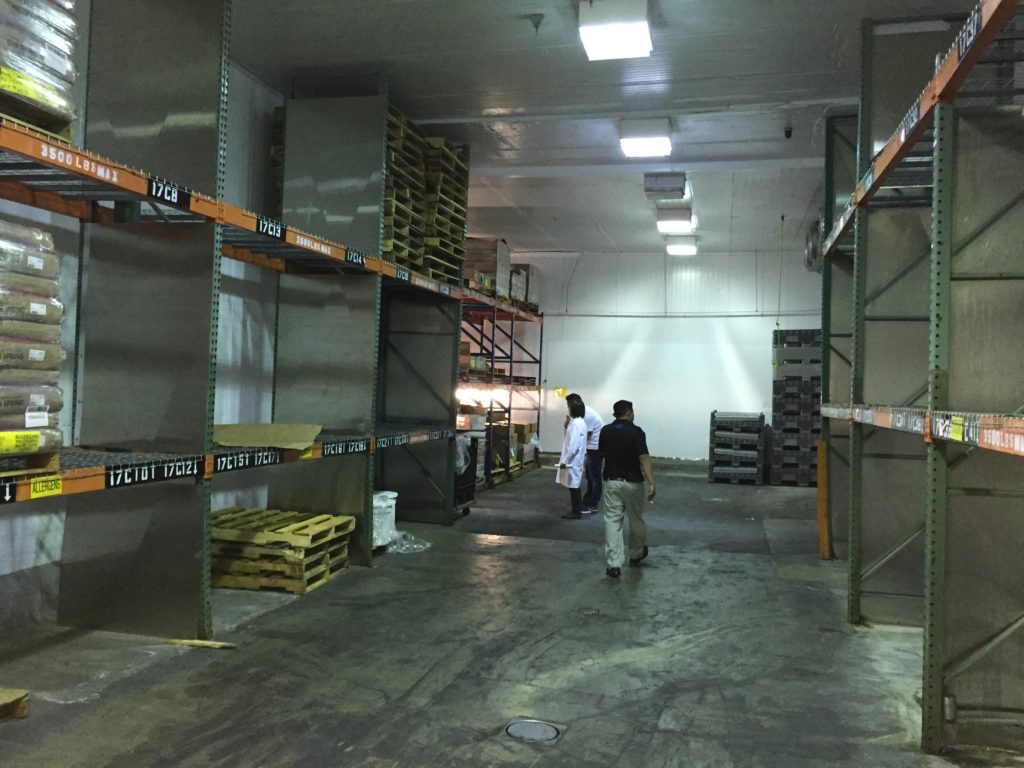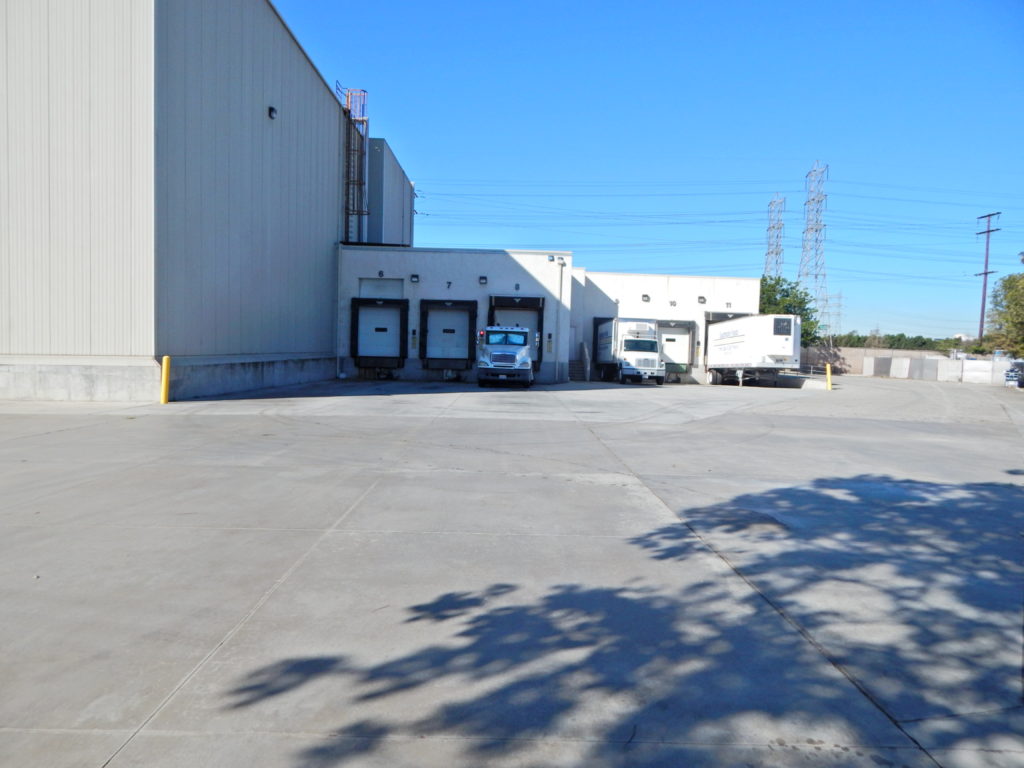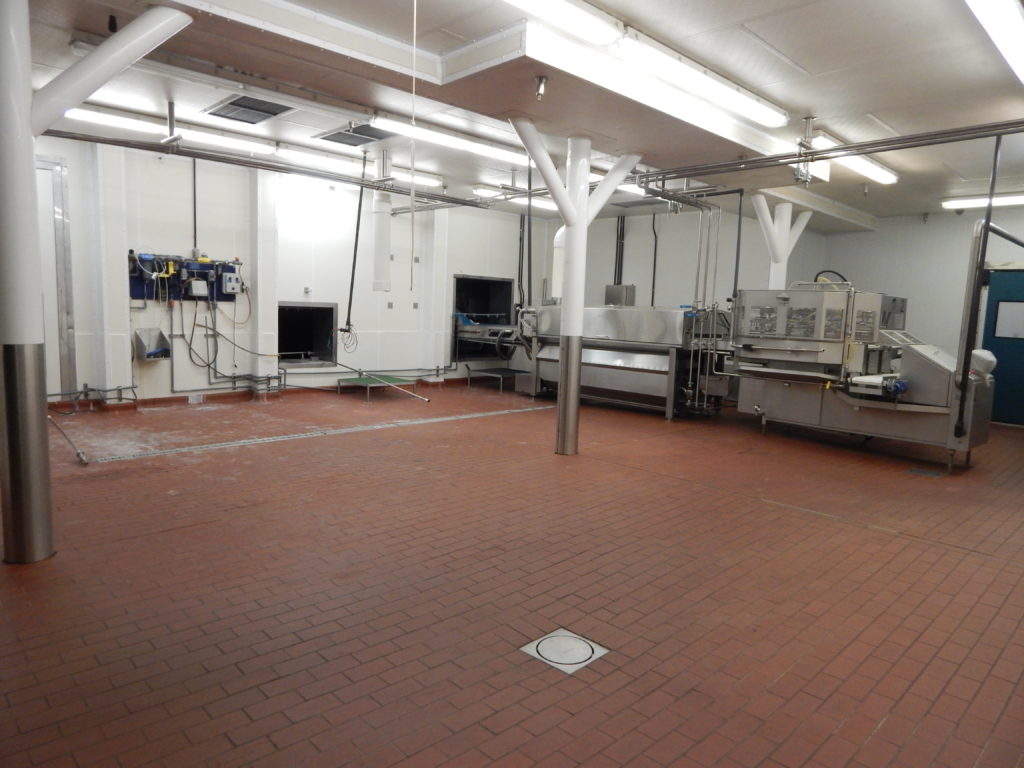An 18,280 square foot industrial food processing facility is available for sale in Los Angeles County. Alameda St just south of Downtown L.A. Dock high loading, cooler, freezer, floor drains, food labs, offices, and boiler. Call 323-767-2033 to inquire. $4-5M price range. Former Asian/Oriental frozen food manufacturing business.
Category Archives: Food Industry
Food manufacturing, processing, and cold storage. Seafood, produce, poultry, beef/poultry, meals/meal kits, and food ingredients intended for grocery stores, restaurants, institutions, and consumers. Facilities with freezers, coolers, USDA processing areas, bakeries, floor drains, food safety testing labs, and wastewater interceptors.
Food Processing Freezer Cooler Building – For Sale, Los Angeles County
Great food production and cold storage facility. The owner built coolers and freezer in 2004 that are 43 feet high which accommodate 5 high racking. The facility has floor drains, washable walls, clarifier/interceptor with wastewater discharge, pasteurization machinery and liquid silos, 13 truck high loading positions, and is situated on a large 116,740 square foot lot of M2 zoned land in the City of South Gate, Los Angeles County, California.
Located 20 minutes from the Port of LA, LAX, and Downtown Los Angeles. Visible from the 710 Long Beach Freeway. Central Southern California location.
The building lends itself to the following food industries: meat, beef, poultry, fish/seafood, eggs, dairy (milk, cheese), beverages like kombucha or juice, brewery, bakery, frozen food manufacturing, prepared meal delivery, commercial kitchen, airline commissary, produce processing, etc… Listing brochure for sale: Download Aerial Brochure. This is a rare opportunity to acquire such a high quality food facility. Was built to USDA and SQF food safety specifications.
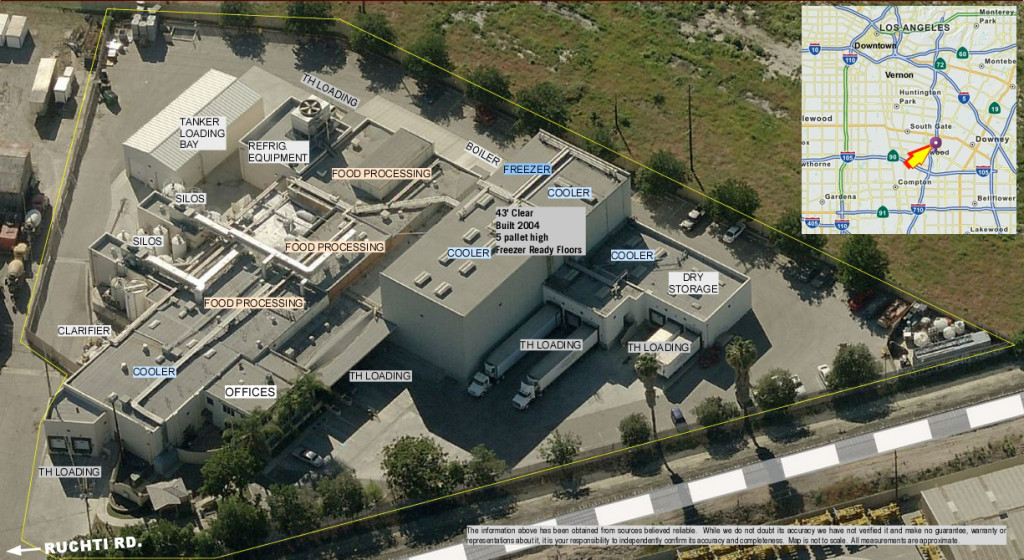
UPDATE: this property was sold in March 2018.
Slaughterhouse Scarcity
A New York Times article describes some of the challenges of local-food movements across the country: a lack of slaughterhouses.
...growing problem for small farmers here and across the nation: too few slaughterhouses to meet the growing demand for locally raised meat." Los Angeles has only a handful of live animal processing plants, when decades ago there were dozens. In what could be a major setback for America’s local-food movement, championed by so-called locavores, independent farmers around the country say they are forced to make slaughter appointments before animals are born and to drive hundreds of miles to facilities, adding to their costs and causing stress to livestock. As a result, they are scaling back on plans to expand their farms because local processors cannot handle any more animals.
The LA Times recently posted this article “One of L.A. County’s last slaughterhouses could go on the chopping block.” Neighbors and city zoning codes pose serious challenges to any type of animal processing plant here in Southern California.
I represent one of the last slaughterhouses in the City of Los Angeles. The company is thriving with hearty demand for their product.
Grease Interceptor (Clarifier) for Food Processing Buildings
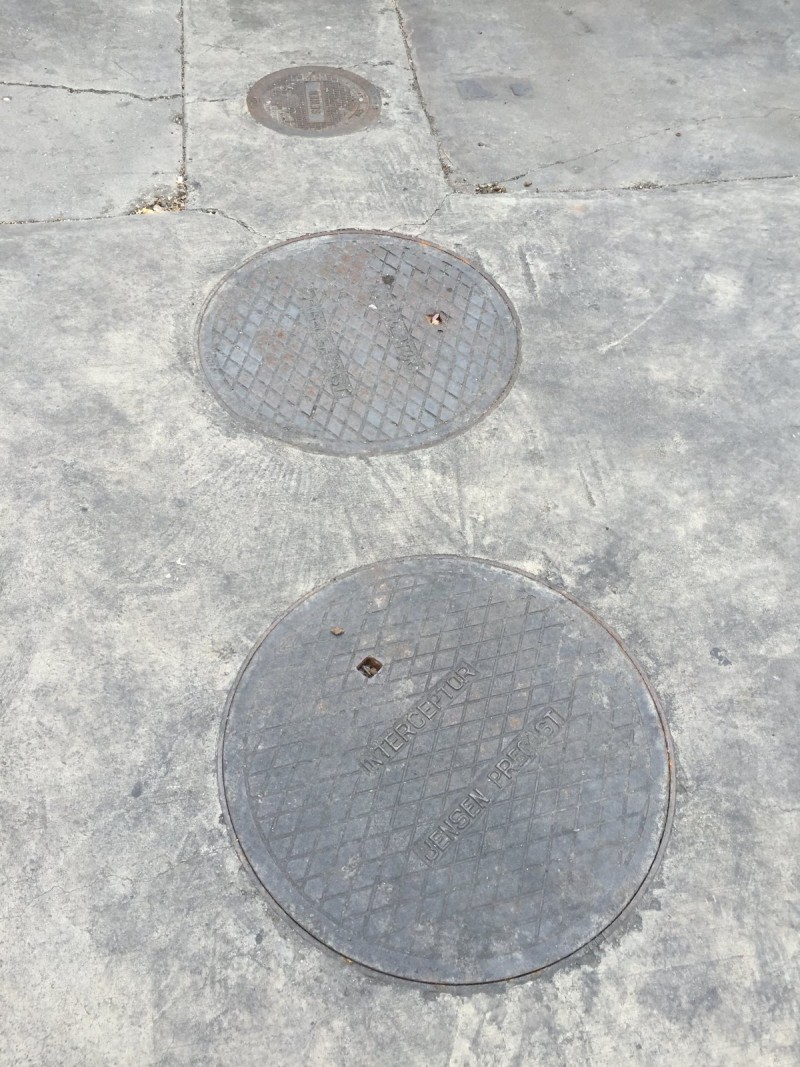
Vernon Livestock Rendering Plant

Baker seizes on fat wherever it can: dairy cows that have died in the heat of the Central Valley, the trimmings left over from the purchase of a Niman Ranch roast at Whole Foods, steaks and chickens whose shelf life at Pavilions has expired. The company retrieves grease from deep fryers at McDonald’s and the drippings of ribs in the Vons hot section. Rendering is the most elemental form of recycling, the regeneration of the dead into soap and scented creams. It has existed for millennia in societies, and its reach in modern America is staggering. We live in a vast cycle of fat reclamation, one that stretches from the killing floors of the Midwest to our medicine cabinets, making a stop along the way at the local Burger King.
Every restaurant and fast-food stand in L.A. has a fat reservoir called a grease trap, usually secreted under the parking lot. A trap may strain as much as 15,000 gallons of liquid fat from a kitchen’s drains, though the speed at which it fills depends on what’s cooking upstairs. A Burger King trap can take three months to fill, while an El Pollo Loco trap might need to be emptied in weeks. There are tens of thousands of grease traps citywide, each a promising revenue source for rendering companies. Baker taps around 8,000 of them.
Biodiesel! About 40 pounds of good ground beef heated to 250 degrees will produce enough tallow to make a gallon of biodiesel. The process is insanely wasteful if cattle are raised for it alone; you’d need to boil an entire cow to fill your Chevy Volt. Yet there’s no shortage of cow remnants in slaughterhouses, and U.S. production of biodiesel from renderers has grown from 78,000 metric tons in 2007 to 400,000 metric tons in 2008.

